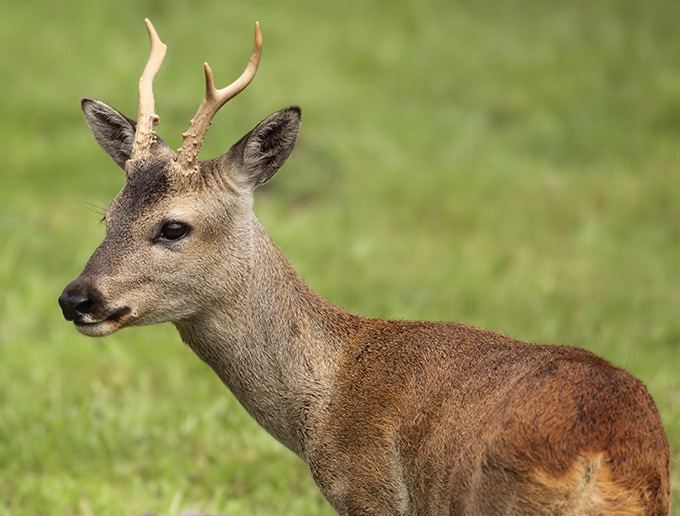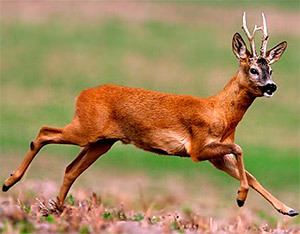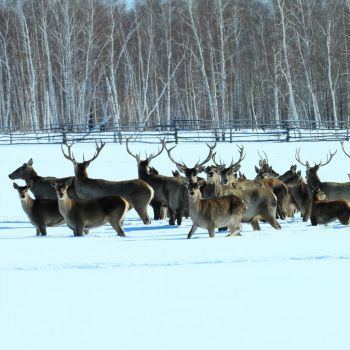Order Artiodactyla Rank Species | Phylum Chordata Family Cervidae Genus Capreolus Higher classification Capreolus | |
 | ||
Similar Deer, Capreolus, Water deer, Siberian musk deer, Mammal | ||
Siberian roe deer hunting in russia with latvian safari club
The Siberian roe deer or eastern roe deer (Capreolus pygargus) is a species of roe deer found in northeastern Asia. In addition to Siberia and Mongolia, it is found in Kazakhstan, the Tian Shan Mountains of Kyrgyzstan, eastern Tibet, the Korean Peninsula, and northeastern China (Manchuria).
Contents
- Siberian roe deer hunting in russia with latvian safari club
- Taxonomy
- Description
- Distribution and habitat
- Diet
- Behavior
- References

Its specific name pygargus, literally "white-rumped", is shared by the pygarg, an antelope known in the antiquity. The name was chosen by the German biologist Peter Simon Pallas in the late 18th century. The roe deer has long antlers.

Taxonomy

The Siberian roe deer was once considered by some as the same species as the European roe deer (Capreolus capreolus), but it is now considered to be separate. It has larger antlers with more branches than those of European roe deer. The Siberian species can be found across central Asia and in the Caucasus Mountains and weighs up to 59 kg (130 lb). The Siberian and European roe deer meet at the Caucasus Mountains with the Siberian roe deer occupying the northern flank, and the European roe deer occupying the southern flank, Asia Minor, and parts of northwestern Iran. Roe deer can jump distances up to 15 m (49 ft), and generally live about 8–12 years, with a maximum of about 18 years.
The two subspecies of Siberian roe deer are C. p. pygargus and C. p. tianshanicus (named for the Tian Shan mountains).
Description

The Siberian roe deer is a moderately sized metacarpalian deer, with a long neck and large ears. In winter the northern populations exhibit light gray coloring, but their southern counterparts are grayish brown and ochraceous. The belly is creamy and the caudal patch is white. In the summer, their coloring is reddish. Young have a spotted coat. Males are larger and have three-tined antlers, widely spaced and slanting upward, which are shed in the autumn or early winter and begin to regrow shortly thereafter.
Distribution and habitat
Siberian roe deer are found within the temperate zone of eastern Europe and Asia. Fossil records show their territory once stretched to the northern Caucasus. In the late 19th and early 20th centuries, their range was diminished by overhunting in eastern Europe, northern Kazakhstan, western Siberia, and northern regions of eastern Siberia. Due to a division in their range, two morphologically different subspecies resulted (Ural and Siberia).
The Siberian roe deer has a light, slender build adapted for tall, dense grass. They live in forest and steppe habitats and develop high densities in tall-grass meadows and floodplains. They are adapted to severe weather extremes.
It may have become naturalized in England for a short period in the early 20th century as an escapee from Woburn, but were exterminated by 1945.
Diet
The diet of the Siberian roe deer consists of over 600 species of plants – mostly herbaceous dicotyledons (58%), monocotyledons (16%), and woody species (22%). In winter, without proper sustenance, they have a lowered metabolic rate. In summer, their dietary need for sodium necessitates visits to natural salt licks. Water is usually obtained through moisture-rich foods as opposed to directly from source.
Behavior
Mating occurs in August and September, and female roe deer are the only ungulates to undergo embryonic diapause. Embryonic implantation takes place in January and gestation lasts 280–300 days. Females usually have two young at a time, which are weaned after 4–5 months. Females reach sexual maturity in their first year of age but usually do not breed until their second. Males usually mate in their third year of life. The life-span the Siberian roe deer does not usually exceed 10 years.
Males mark their territory with olfactory marks, using secretion glands on the head skin, which they rub against trees, shrubs, and high grasses, or with visual marks, by fraying trees with their antlers. Vocal signals are also a form of communication in Siberian roe deer. They have six signals: squeaking or whistling, rasping, barking, whining, screaming, and nonvocal sounds.
